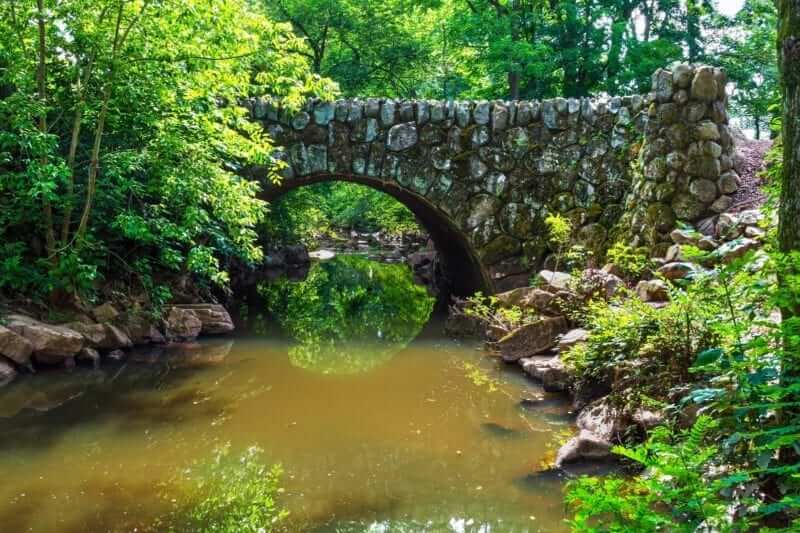If you are a science teacher you do not want to miss out on getting to know a little about Duke Farms, where the mission is “to become a model of environmental stewardship for the 21st Century and to inspire visitors to become informed stewards of the land.”
Duke Farms has much to offer NJ educators: rich field trip experiences for a range of grade levels, high quality professional development programming, and lesson plans and free kits for your classroom that align with state standards.
I can honestly say, after visiting, that I am inspired! I stumbled on this excellent field trip destination boasting 18 miles of trails and free entry, with tons of classroom resources, when I registered for a professional development class they were offering on project based learning. Besides the benefit of the class, they gave us a tour of the farms, and put us up for the night in a cottage. We were able to get an after-hours experience that included some ghost stories and a lot of laughing, as well as learning about the many green initiatives that Duke Farms has taken on.
Itching for more, I came back just a week later to rent bikes and explore the property with my family. We were greeted with, among other things, an unexpected farmers market. Whether you’re interested to visit with friends, family, or your students, I can promise you will not be disappointed!
Read Part One of our Duke Farms series here.
Enter the main gate through Dukes Parkway West. As soon as you get out of the car, you have to start looking around at all the amazing environmental efforts they showcase. To start, you’ll be standing on a semi-permeable parking lot, which allows rainwater to filter through to recharge the groundwater. As you start walking toward the Farm Barn Orientation Center, you will notice that the parking lot is edged with bioswales, allowing the runoff to be naturally cleaned before entering the waterways or ground. It’s hard to imagine that the enormous, 2200 square foot Farm Barn was originally built in 1906 simply to house the farm’s horse and cattle.
Inside you will see a building that has been renovated and repurposed following the LEED platinum standards, making it the highest standard in green efforts, according to the U.S. Green Building Council. The Farm Barn has classrooms, a cafe, bathrooms, and serves as the interpretive center. Visitors can learn all about green building, sustainability, habitats, wildlife, the history of the property, as well as print out customized tours of the property, focusing on sculptures, agriculture, horticulture, wildlife, ecosystems- or whatever you want to teach your kids on your field trip.
Before crossing the street, you may want to take a quick walking tour of this area. The Solar Array that houses the panels collecting ALL of the energy needs for Duke Farms is located right next to the parking lot. Exiting the orientation center from the Cafe, you will find yourself at the permaculture demonstration garden. What is that you ask? I wasn’t sure either, but Duke Farms is excellent with their signs identifying and explaining all of their green and sustainability endeavors.
Permaculture gardens are designed to be sustainable and self-sufficient, integrating human activity with the natural surroundings, giving high agricultural yields while improving the health of the land. Next to the permaculture garden you will find the largest community garden in the country, with more than 460 plots that welcome all level of gardeners to grow organic, healthy, environmentally friendly food. Some of this food is collected for the “Giving Garden” that donates food to local food banks.
Okay, time to cross the street and enter through the south gate for pedestrians and bikers. For those disabled or unable to walk far, a tram is available at the Farm Barn Tram Stop right next to the parking lot and will take you to some of the major sites at Duke Farms. Before crossing, get a good look at the tram stop: it was built with reclaimed materials from onsite demolished structures and the rooftop is covered in vegetation that helps keep the area cool during summer months. Once you cross the street, a paved path brimming with indigenous wildflowers, native waving trees, and flowing water will lead you to the Hay Barn.
This building burned in 1918, but Doris Duke left the remaining high outer walls that are now covered in trumpet creeper vine and filled the area with marble sculptures.
Beyond the Hay Barn is the bike rental building. Following a map, you can make your way around to see the greenhouses where Doris once housed her International Gardens. These greenhouses now serve as a nursery for native plants grown from seeds collected on site for habitat regeneration as they continue to remove invasive species and restore the land, in keeping with the Duke vision for preserving NewJersey flora and fauna.
Even if you can’t make it to Hillsborough to visit Duke Farms, they still have much to offer. Duke Farms has an eagle cam, easily accessible to any classroom with internet, that can give you a bird’s eye view of the life of a Bald Eagle. They have free lesson plans to accompany the experience, as well as free Eagle kits that can be borrowed for up to 3 weeks, containing short stories, field guides, replicas, an eagle puppet that makes authentic eagle sounds, and other resources (100 deposit at time of pick up required- refunded when complete kit is returned.) But they don’t stop there: they offer tons of free lesson plans that correlate to State Standards.
And, whether coming in as a visitor or teacher, Duke Farms offers many classes for the community, and specific professional development for teachers. Take a minute to check them out at http://www.dukefarms.org/ and see what they have to offer you. I sure am glad that I did.
–Written by Jessica Cicalese, Science Educator at Toms River Schools






